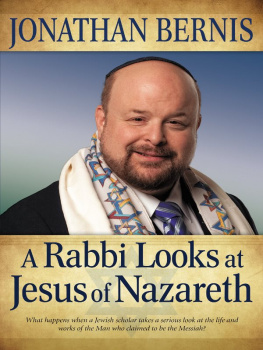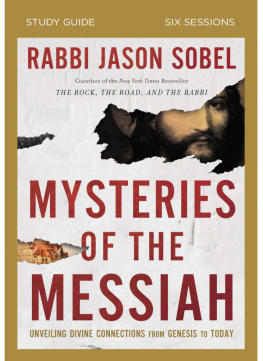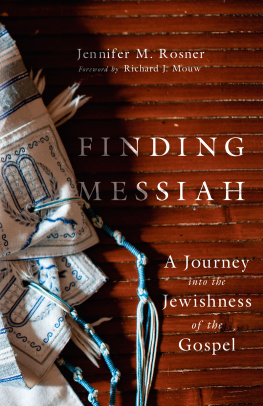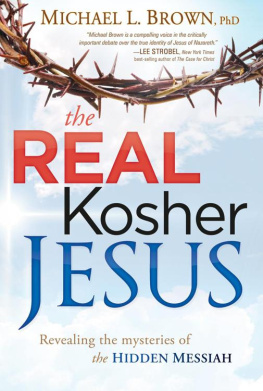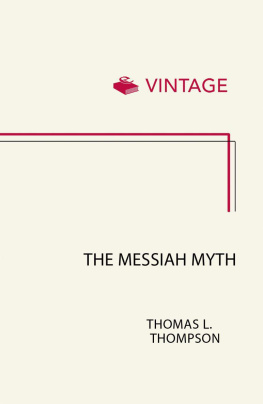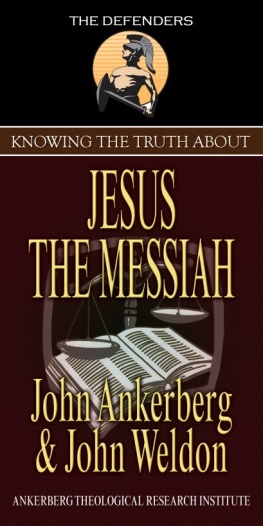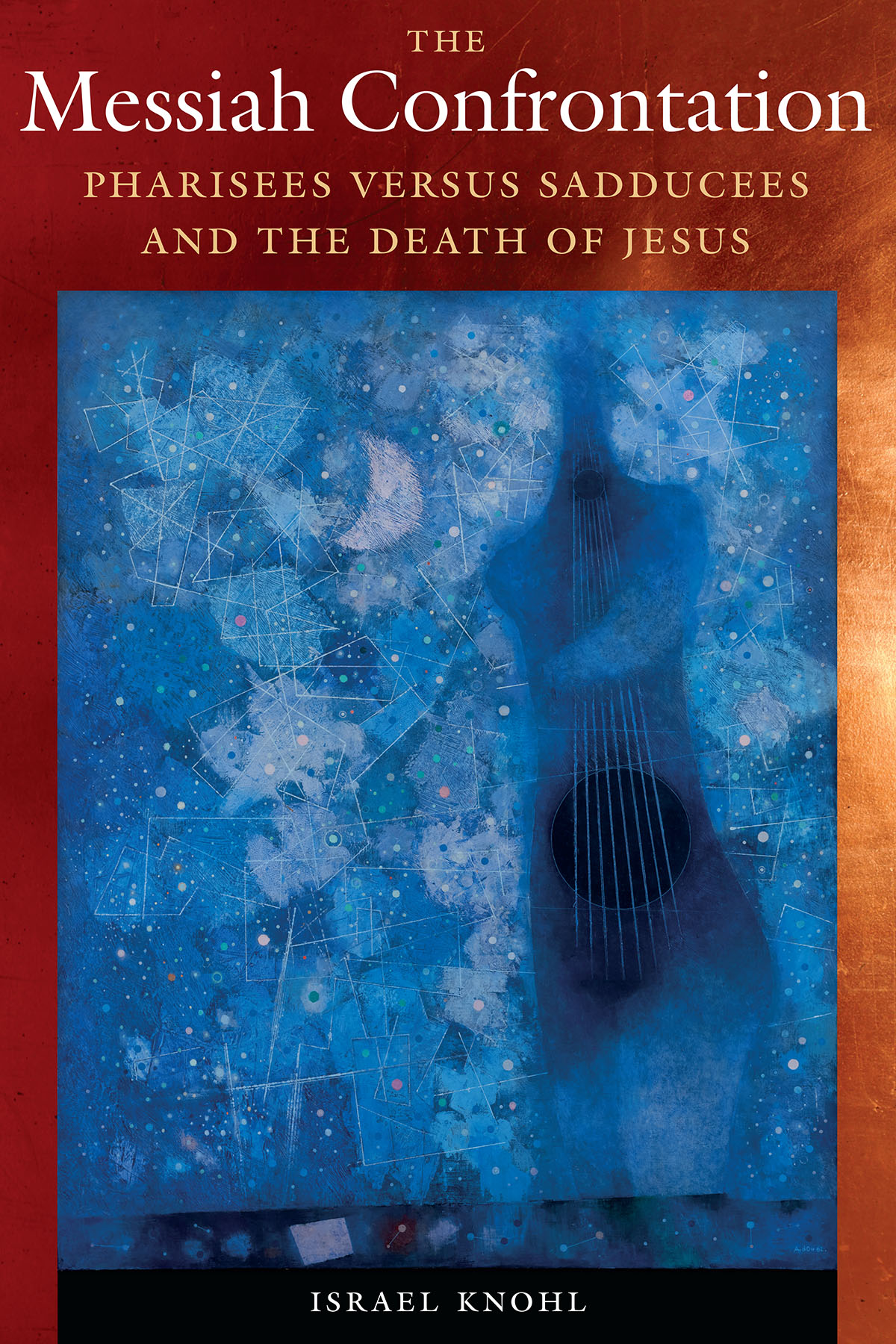
For Christians, rejecting the theological anti-Jewishness of their own tradition and embracing the Jewishness of Jesus require radical revisions of basic understandings. The Messiah Confrontation moves this project forward by showing that the defining conflict leading to the death of Jesus took place within Judaism, not against it. Knohls bold analysis is compelling, illuminating, and important for Christian and Jewish readers alike.
James Carroll, author of Constantines Sword
A fascinating interpretation of two strands of biblical thought that developed over a millennium and collided in the trial of a Jew named Jesus of Nazareth. Erudite and a page-turner.
Ronald Hendel, Norma and Sam Dabby Professor of Hebrew Bible and Jewish Studies, University of CaliforniaBerkeley
Knohl not only documents a series of transformations in Israelite messianism but also meticulously discusses their political ramifications. This thought-provoking work is a must-read for anyone interested in the biblical world as well as in Jewish thought and politics throughout history.
Ishay Rosen-Zvi, chair of the Department of Jewish Philosophy and Talmud, Tel Aviv University
The Messiah Confrontation is the product of meticulous research, yet takes away ones breath. It can be seen as a key that allows us to understand messianic phenomena hundreds of years after the writing of biblical literature, and in reality until this very day. Knohl lays the foundation for the development of a narrative that allows us to classify, categorize, and evaluate key events throughout Jewish history in light of messianic tension. In essence, it provokes the reader and the scholar to develop a new narrative of Jewish historyone based entirely on the tensions between different messianic ideas.
Dov Schwartz, professor of Jewish philosophy, Bar Ilan University
In The Messiah Confrontation, Israel Knohl, one of the leading Bible scholars of our time, proposes an original and provocative history of messianism from the Bible through ancient Judaism, culminating in a new interpretation of the trial and death of Jesus. This profoundly learned and accessibly written book will be of great interest to scholars and laypersons alike, and especially to all readers concerned with the fraught history of Judaism and Christianity and their many intersections.
David Stern, Harry Starr Professor of Classical and Modern Hebrew and Jewish Literature, Harvard University
The Messiah Confrontation
Pharisees versus Sadducees and the Death of Jesus
Israel Knohl
Translated by David Maisel

The Jewish Publication Society | Philadelphia
University of Nebraska Press | Lincoln
2022 by Israel Knohl. Originally published in Hebrew as Machloket ha-mashiach (Israel: Kinneret, Zemora, Dvir, 2019).
Cover designed by University of Nebraska Press; cover image: Mordecai Ardon, Tammuz, 1962 Courtesy of Ardon Estate, photo: D. James Dee. Background image: iStock/KazanovskyAndrey.
Author photo Yoram Blumenkranz Photo.
All rights reserved. Published by the University of Nebraska Press as a Jewish Publication Society book.
Library of Congress Control Number: 2022008578
The publisher does not have any control over and does not assume any responsibility for author or third-party websites or their content.
Contents
The original Hebrew version of this work was based mostly on words I spoke to Omri Shasha, a PhD candidate, which he recorded and edited. I would like to thank him for his skillful work.
Later, the book enjoyed the wisdom of my two editors at the KinneretZmora-Bitan publishing house, which published the Hebrew version: Yael Naamani and Samuel Rozner.
Joy Weinberg, managing editor of The Jewish Publication Society, adapted and edited the work very skillfully, substantively updating it with new material for an English-speaking audience. My copyeditor, Amy Pattullo, helped to clarify significant issues.
David Maisel, my gifted translator for more than twenty years, prepared the English translation.
Finally, I would like to thank The Jewish Publication Society and its director, Rabbi Barry Schwartz, and the University of Nebraska Press for copublishing this work.
A few years ago, on the Jewish New Year, I walked from my home in the German Colony in Jerusalem to the Western Wall in the Old City. When I arrived, the Temple Wall enclosure was full of people from end to end. Among the worshipers, a large group of men and young people stood out. They were all dressed in white and wore white headdresses.
Their prayer leader, who had a silvery beard, stood right next to the Wall. Suddenly he raised his head, and loudly and with great emotion cried:
The king that sits on a lofty throne.
Two sturdy young men to the left and right of the prayer leader took a large picture out of a linen bag. In the center of the picture was an old Hasidic leader who had passed away several years earlier. He had a long beard and his arms were raised. Between his arms the following words appeared:
I am the king!
The two young men lifted up the picture and placed it against the stones of the Wall, and the prayer leader intoned in a tremolo:
The king that sits on a lofty throne.
In the tradition of the sages rooted in the Bible, the New Year is the day when God is crowned King of the Universe, and the shofar (rams horn) is blown in honor of his coronation. This is expressed in Psalm 47, which is read seven times before the shofar is sounded:
God has gone up with a shout, the Lord with the sound of a trumpet.
Sing praises to God, sing praises! Sing praises to our King, sing praises!
For God is the king of all the earth; sing praises with a psalm!
God reigns over the nations; God sits on his holy throne. (Ps. 47:58)
The scene I witnessed by the Western Wall on the New Year was a contemporary reflection of the view, held by a number of scholars, that on the New Year not only is God again crowned king of all the nations, but the king of the house of David is again crowned king of Zion and Judah on this day in the Temple in Jerusalem.
The group by the Wall consisted of followers of Rabbi Yisroel Ber Odesser. This rabbi, who in his youth lived in Tiberias and Safed, became known for a mysterious note that he found. His followers believe that Rabbi Nachman of Breslov, a renowned Hasidic leader whose grave in the Ukraine is visited by tens of thousands of Breslov Hasidim every New Year, sent this note specifically to Rabbi Yisroel Ber Odesser, who was born in 1888, seventy-eight years after Rabbi Nachman died. Rabbi Odessers followers call him the master of the note. Unlike the other Breslov Hasidim, who go to Uman in the Ukraine on the New Year, the followers of the master of the note stay in Jerusalem and perform the ceremony I saw.
The ceremony combined two acts of coronation: the coronation of God, described as the king who sits on a lofty throne, and the coronation of the messianic leader, the master of the note, whom Rabbi Odessers followers regard as the incarnation of Rabbi Nachman of Breslov and the king-Messiah.
Near the group of followers of the master of the note stood another group. The prayer leader of this group was a kabbalist with red hair dressed in tattered clothes. He read the words of the prayers with great emotion, loudly and while weeping. It was obvious that the other group displeased him. They, for their part, muttered criticisms of him and called him the old serpent.
Next page


